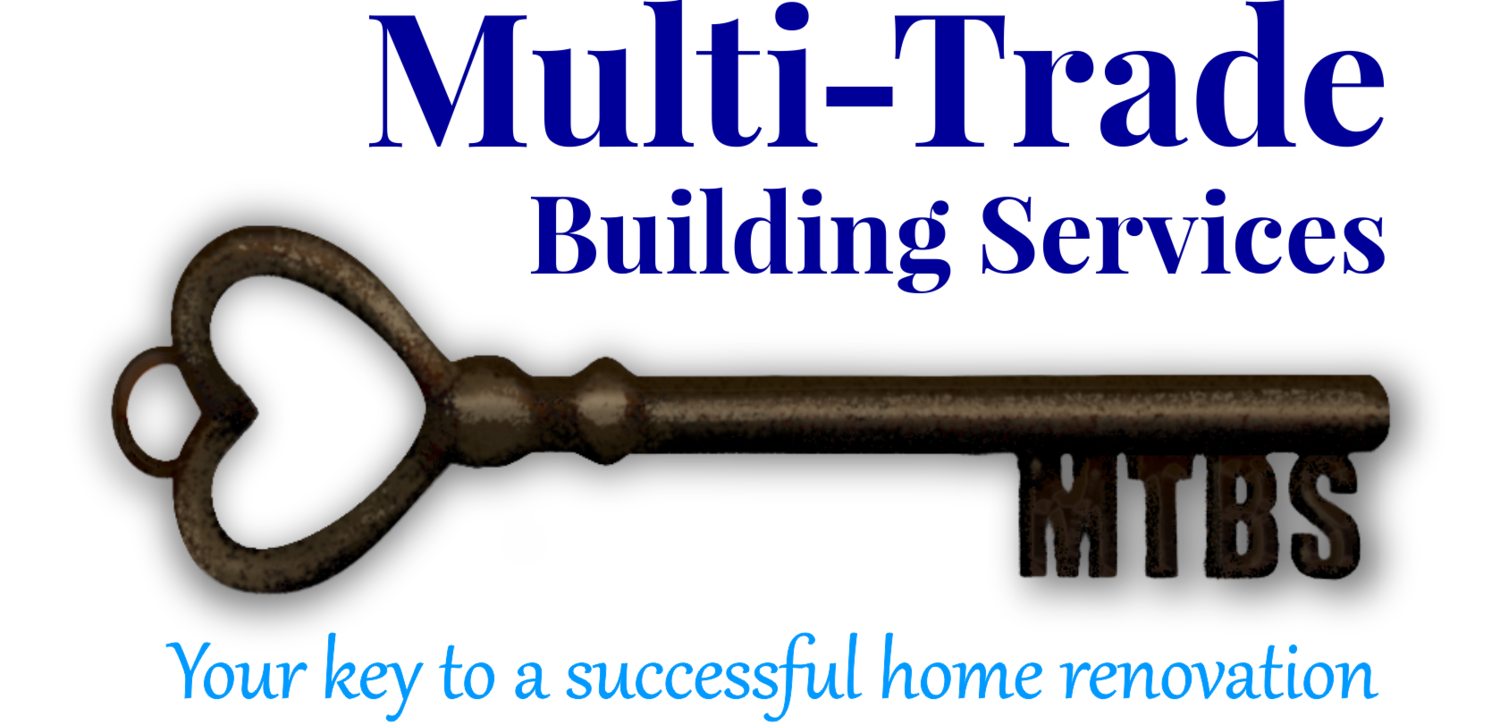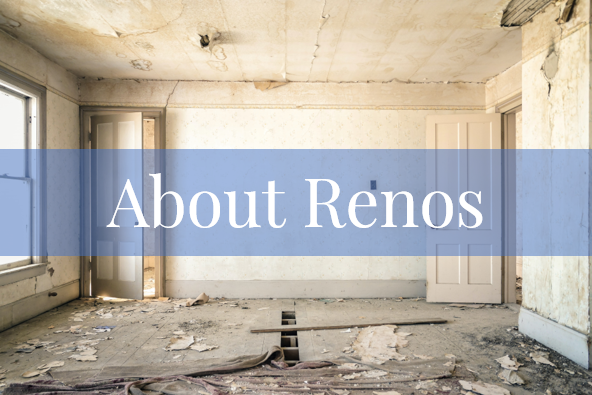5 Surprising Causes of Bathroom Mold and How to Prevent Them
/Is Hidden Mold Affecting Your Health? Here’s What You Need to Know.
Have you ever noticed stubborn black spots creeping along your bathroom tiles or lurking in the corners of your shower? It’s easy to think of bathroom mold as just an unsightly nuisance, but the truth is, it’s a serious health risk.
Mold thrives in damp environments, and your bathroom is its perfect breeding ground. What many homeowners don’t realize is that mold spores become airborne—which means you’re breathing them in every single day.
If you’ve been dealing with chronic allergies, asthma flare-ups, unexplained headaches, or persistent coughing, mold could be the culprit.
In this blog, we’re uncovering five unexpected causes of bathroom mold and, more importantly, how to stop it in its tracks. Say goodbye to pesky black spots and hello to a healthier, cleaner home!
Prefer to listen?
The Health Risks of Mold Exposure
Mold isn’t just an eyesore—it’s an invisible threat that can have serious effects on your health.
☣ Respiratory Issues – Mold spores irritate the lungs, especially for people with asthma, allergies, or sinus issues. If you frequently wake up congested or coughing, mold could be triggering your symptoms.
☣ Skin Reactions – Some people experience rashes, redness, or itchiness after prolonged mold exposure. If you notice skin irritation after using your bathroom, it’s time for a mold check.
☣ Fatigue & Headaches – Many homeowners don’t realize that prolonged mold exposure can cause brain fog, headaches, and fatigue. If you feel more tired than usual or struggle to concentrate, mold could be affecting your air quality.
☣ Worsening Allergies – Are your allergies worse indoors than outside? That’s a red flag. Mold spores circulate in the air, and if your bathroom has hidden mold, it could be making your symptoms worse.
The good news? You CAN get rid of mold—IF you tackle the root cause.
Let’s break down the hidden reasons mold keeps coming back (and how to prevent them for good).
Where Mold Loves to Hide: Identifying Mold-Prone Areas in Your Bathroom
Mold isn’t always obvious. While you might spot it in your shower grout or on the ceiling, it’s often growing in places you don’t expect—until the problem gets serious.
Here are the top mold-prone areas you need to check:
1. Shower & Bathtub
Why? Constant moisture, steam, and soap scum create the perfect breeding ground.
✅ What to do: Keep tiles, grout, and caulking clean and reseal grout every 6–12 months to prevent mold from sinking in.
2. Sink & Countertop
Why? Water splashes, toothpaste residue, and damp surfaces create lingering moisture.
✅ What to do: Wipe down the sink area after every use, and check underneath for any leaks that could be creating hidden mold.
3. Toilet Base & Behind the Toilet
Why? Condensation forms on the toilet tank, and leaks at the base can go unnoticed for months.
✅ What to do: If you see water pooling around the base, check the wax ring seal and address any plumbing issues immediately.
4. Ceiling & Walls
Why? Poor ventilation allows moisture to collect, leading to dark streaks or peeling paint.
✅ What to do: If you notice a musty smell or discolouration, it’s a sign moisture is being trapped. Improve ventilation by using an exhaust fan or cracking a window.
5. Underneath the Bathroom Sink
Why? A slow leak under the sink can go unnoticed for months, leading to moldy cabinets or drywall.
✅ What to do: Regularly check for dripping pipes or damp wood, and store items in waterproof containers instead of directly on the cabinet base.
6. Window Frames & Door Trim
Why? Condensation from temperature differences can cause hidden mold growth in the crevices.
✅ What to do: Wipe down window sills and trim regularly, and ensure your bathroom window isn’t trapping moisture.
7. Bath Mats & Shower Curtains
Why? These absorb moisture every day and hold onto mold spores if not washed frequently.
✅ What to do: Wash bath mats and shower curtains every 1–2 weeks, and replace them when they start smelling musty.
💡 Pro Tip: If you see mold in multiple areas or it keeps coming back, it means there’s an underlying issue—usually a moisture or ventilation problem. Address the cause, and you’ll stop mold before it spreads.
🚿 Did you know? Proper ventilation can cut down bathroom mold growth by up to 50%! 🚿
Mold thrives in moisture-heavy spaces, and without the right ventilation, it keeps coming back. If you're constantly battling musty smells and stubborn black spots, your bathroom might need an upgrade.
✅ Want to prevent mold before it starts? Learn more about our expert renovation services and how we can help create a healthier, mold-free bathroom.
5 Causes of Bathroom Mold
1. Everyday Habits That Make Mold Worse (Without You Realizing It!)
Even if your bathroom has great ventilation and no leaks, your daily habits might be encouraging mold growth without you realizing it.
Are you guilty of any of these mold-making mistakes?
🚫 Leaving Wet Towels in the Bathroom – Damp towels create a humid environment that mold loves.
✔ Solution: Hang towels on a rack with proper airflow instead of piling them on the floor or over the shower.
🚫 Skipping Post-Shower Cleanup – Water droplets left on walls, tiles, and glass provide moisture for mold spores.
✔ Solution: Squeegee your shower and wipe down wet surfaces after every use to reduce lingering moisture.
🚫 Using the Wrong Bath Mat – Cotton bath mats soak up moisture and can become moldy fast.
✔ Solution: Choose a quick-drying bath mat made of rubber or microfiber, and wash it weekly.
🚫 Keeping Too Many Products in the Shower – Shampoo bottles, loofahs, and soap dishes trap water and create hidden mold pockets.
✔ Solution: Reduce clutter and store bottles on a raised rack to allow airflow underneath.
🚫 Showering with the Door Closed – Without airflow, humidity lingers longer, giving mold more time to develop.
✔ Solution: Crack the door open while showering or leave it open afterward to help steam escape.
💡 Mold isn’t just about moisture—it’s also about what you do after moisture is present. Making small habit changes can make a huge difference in keeping your bathroom mold-free!
2. Poor Ventilation (Why Steam is Your Worst Enemy)
Every time you take a hot shower, you create the perfect warm, humid environment for mold to thrive. If your bathroom isn’t properly ventilated, all that moisture has nowhere to go—which means it settles on walls, ceilings, and fixtures.
🛠 How to Prevent It:
✔ Use an exhaust fan every time you shower, and let it run for at least 30 minutes afterward.
✔ Leave the bathroom door open after showering to release trapped moisture.
✔ If you don’t have an exhaust fan, crack a window or invest in a dehumidifier to keep humidity levels in check.
Not sure if your exhaust fan is working properly? Hold 3 pieces of toilet paper up to the vent while it’s running. If the tissue doesn’t stick, your fan isn’t strong enough to pull out moisture. Time for an upgrade! For more information to help you determine if your exhaust fan is functioning, read Is Your Bathroom Exhaust Fan Working Efficiently?
3. Leaky Fixtures & Plumbing (The Mold Problem You Didn’t Know You Had)
That tiny drip from your faucet or slow leak from your toilet may not seem like a big deal—but over time, even small leaks can create a major mold problem.
Hidden leaks are one of the most common reasons mold keeps coming back!
🛠 How to Prevent It:
✔ Check under sinks, around toilets, and behind your shower for signs of leaks.
✔ Look for water stains or a musty smell—both are signs that mold is lurking.
✔ Fix leaks ASAP before they turn into expensive water damage problems.
4. Poor Insulation (The Mold You’re Creating Without Realizing It)
Did you know that temperature differences in your bathroom can actually cause mold to grow?
🚨 Here’s how it works:
Warm bathroom air meets a cold window or ceiling → condensation forms.
Moisture collects on surfaces → mold spores settle in and start growing.
🛠 How to Prevent It:
✔ Insulate windows and ceilings to reduce condensation buildup.
✔ Wipe down damp surfaces after showering to prevent moisture from settling.
✔ Consider upgrading your insulation if you notice consistent condensation problems.
5. Neglected Maintenance (Why Cleaning Alone Won’t Stop Mold)
You might be cleaning your bathroom regularly, but if you’re not taking care of small maintenance tasks, mold will keep coming back.
Key Areas to Maintain:
✔ Check caulking – Old, cracked caulking traps moisture and allows mold to grow underneath. Reseal it every 1–2 years.
✔ Wash your shower curtain & bath mats – These absorb moisture and are mold hotspots.
✔ Deep clean grout – Mold loves to grow in porous grout. Use a mold-resistant sealer to prevent it from absorbing moisture
When to Call a Professional
If mold keeps coming back despite your best efforts, it may be time to call in the experts.
Persistent musty smell that doesn’t go away
Mold spreading beyond a small patch (larger than a few square feet)
Health symptoms getting worse (allergies, breathing problems, or fatigue)
💡 Remember: Bleach doesn’t always kill mold—it can actually make it worse by spreading spores!
Final Thoughts: Take Action Before Mold Becomes a Bigger Problem
Mold won’t go away on its own. The longer you ignore it, the more it spreads—and the bigger the impact on your health.
✅ Identify hidden moisture sources
✅ Improve ventilation
✅ Fix leaks ASAP
✅ Upgrade insulation
✅ Stay on top of maintenance
Don’t Let Mold Take Over Your Home!
Mold isn’t just unsightly—it’s a serious health risk. A properly functioning exhaust fan is one of the best defenses against bathroom mold, reducing moisture and keeping your air clean.
If your fan isn’t working efficiently—or you don’t have one at all—we can help!
📞 Call us at 905-259-3344 to book a consultation and quotation, or click below to get in touch.



















